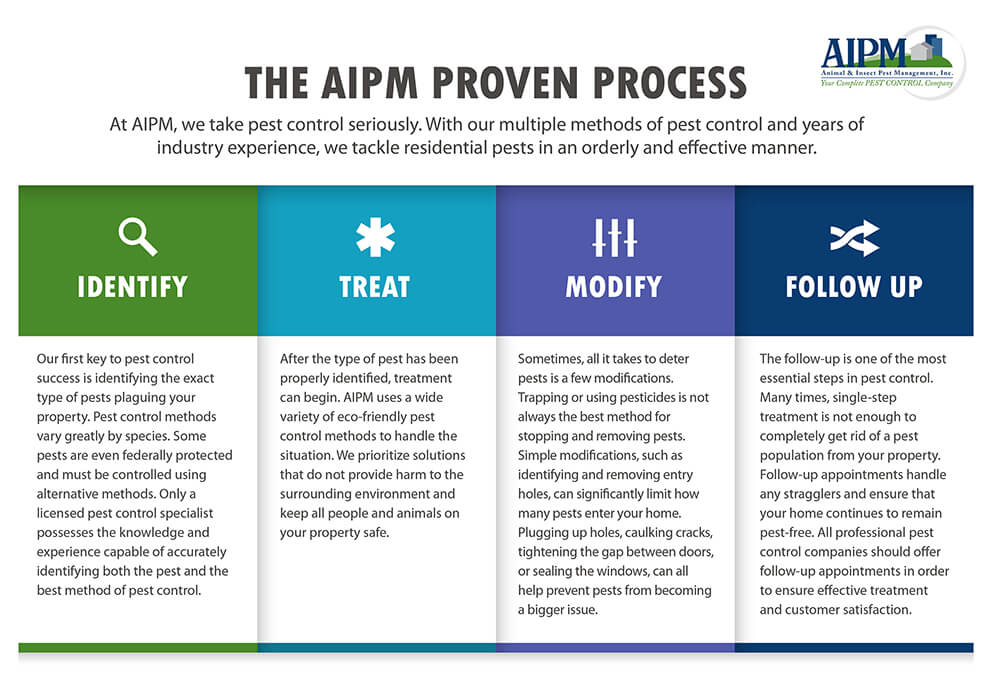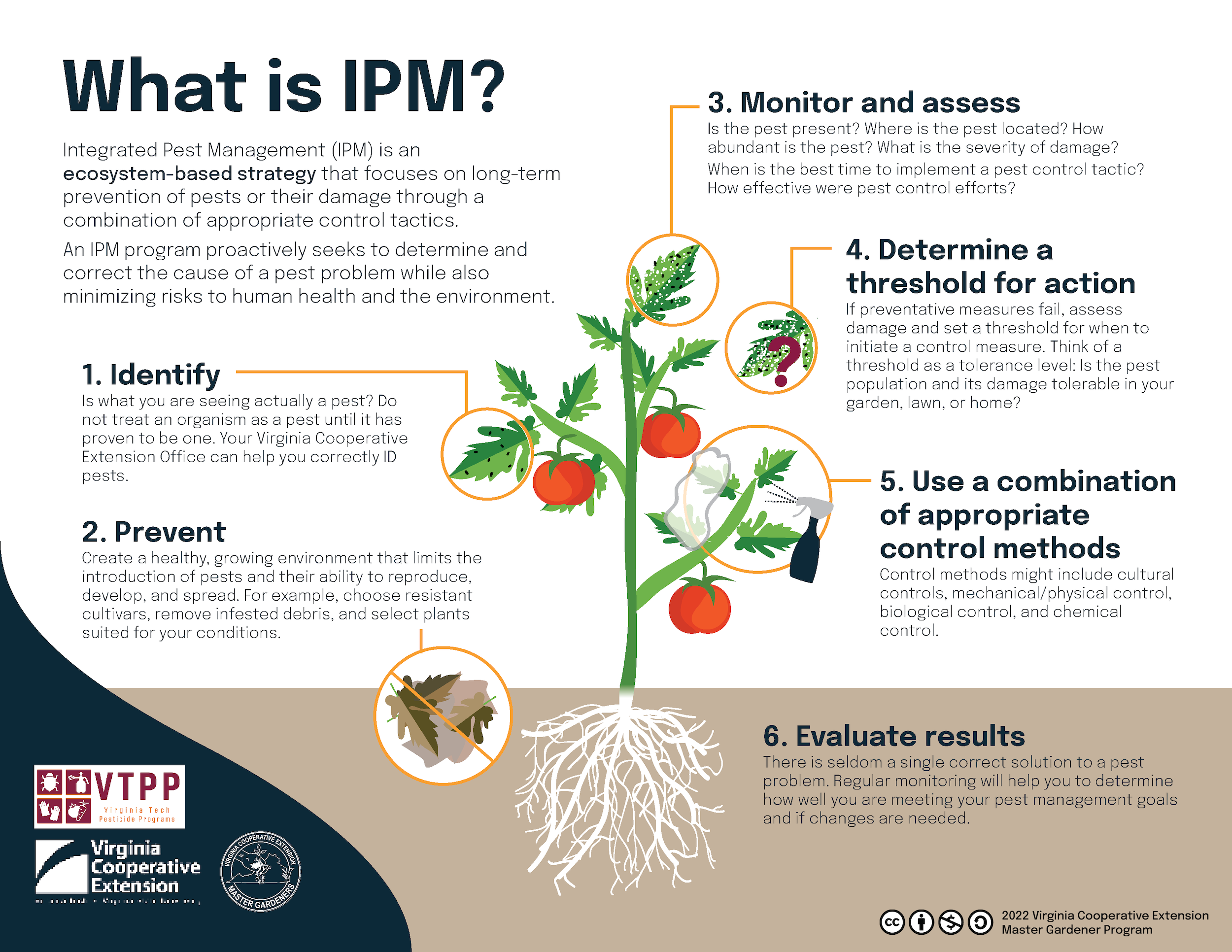The Basic Principles Of Pestwise
The Basic Principles Of Pestwise
Blog Article
The Of Pestwise
Table of ContentsSome Known Details About Pestwise What Does Pestwise Mean?Pestwise Things To Know Before You BuyIndicators on Pestwise You Need To KnowThe 15-Second Trick For PestwiseThe Ultimate Guide To PestwiseThe Facts About Pestwise UncoveredAn Unbiased View of PestwiseThe Definitive Guide for PestwiseThe Ultimate Guide To Pestwise
An organism should not be thought about a parasite till it is shown to be one. Groups of bugs include: constant pests that arc almost always existing and call for normal control. erratic. migratory, or intermittent parasites that call for control periodically or periodically. potential parasites that do not need control under typical problems.Accurate identification is the initial step in a reliable bug management program. Never ever attempt a bug control program up until you are sure of what the insect is. Bed Bug Treatment. The more you find out about the bug and the variables that affect its advancement and spread, the easier, much more economical, and extra effective your parasite control will be
The smart Trick of Pestwise That Nobody is Discussing
As a qualified applicator, you have to recognize with the bugs you are likely to experience in the kind of operate in your accreditation group. To be able to determine and regulate parasites, you require to recognize: the physical attributes of the bugs most likely to be run into. features of the damage they create, their growth and biology, whether they are constant, sporadic.
Trigger as little harm as feasible to every little thing other than the pest. It can set you back more to manage the pest than would be lost since of the insect's damage.
The Best Strategy To Use For Pestwise

If such problems are present, you can take steps to stop the plant condition microorganisms from harming the desirable plants. is a typical goal in lots of pest situations. The intent is to lower the variety of pests to a level where the injury they are creating serves. As soon as a bug's existence is discovered and the decision is made that control is essential, suppression and prevention often are joint goals.
is a rare goal in outside bug situations, since it is difficult to accomplish. Generally the objective is prevention and/or reductions. Obliteration is sometimes tried when an international bug has been unintentionally presented however is not yet developed in a location. Such removal techniques typically are supported by the Government.
Facts About Pestwise Uncovered
gypsy moth, and fire ant control programs are instances. In indoor locations, eradication is an extra usual goal. Enclosed settings normally are smaller sized, less complicated, and more conveniently regulated than exterior locations. In numerous enclosed areas, such as houses; schools; office complex; and wellness treatment, food processing, and cooking centers, certain pests can not or will not be tolerated.
Thresholds might be based upon esthetic, wellness, or economic considerations. These degrees, which are recognized as "activity thresholds," have actually been determined for many insects. A threshold often is evaluated the degree where the financial losses triggered by insect damage, if the pest populace continued to grow, would certainly be higher than the cost of managing the parasites.
As an example, the existence of any type of rats in food handling facilities pressures activity. In homes, people typically take activity to regulate some parasites, such as rats or roaches, also if just one or a couple of have been seen. In many pest control situations, the area to be secured must be kept track of (inspected or scouted) often.
Getting My Pestwise To Work

For instance, there is zero resistance for the existence of bacteria in operating rooms and various other sterilized areas of wellness care facilities. In these circumstances, regular pest control steps are taken to protect against bugs from entering a location and to remove any insects that might exist. Bug control involves browse this site greater than simply determining a parasite and making use of a control method.
All of these might be affected by the bug control gauges you select. Unless you think about the possible results on the entire system within which the parasite exists - Bug Exterminator.
Pestwise for Dummies
The activities of every sort of microorganism or element sharing the site usually influence the actions and wellness of lots of others. When the balance is interrupted, particular microorganisms might be destroyed or reduced in number, and others occasionally the insects - might dominate. Integrated bug management is the combining of ideal bug control strategies into a single strategy (method) to minimize insects and their damage to an appropriate level.
Counting just on chemicals for parasite control can cause pests to establish resistance to pesticides, can cause break outs of other insects, and can damage surfaces or non-target organisms. With some types of bugs, use chemicals as the only technique will certainly attain very inadequate control. To resolve pest problems. you have to: recognize the insect or parasites and determine whether control is required for each.
Climate problems, particularly temperature level, day length, and humidity, influence parasites' task and their price of reproduction. Insects may be killed or suppressed by rain, freezing temperatures, dry spell, or other unfavorable weather. Environment additionally impacts pests indirectly by influencing the development and advancement of their hosts. A population of plant-eating bugs is connected to growth of its host plants.
Pestwise Fundamentals Explained
Birds, reptiles, amphibians, fish, and animals feed on some bugs and aid manage their numbers. Several aggressive and parasitical insect and insect-like species feed on other organisms, some of which are parasites.
Pest populaces can flourish just as lengthy as their rood and water supply lasts. Once the food source - plant or pet - is tired, the insects die or become non-active.
Pestwise Fundamentals Explained
Natural controls usually do not control pests promptly or completely enough to prevent undesirable injury or damages. Other control steps have to be utilized. Those readily available consist of: host resistance, organic control, cultural control, mechanical control, sanitation, and chemical control. Some plants, pets, and frameworks withstand bugs far better than others.
Use of resistant kinds, when readily available, aids maintain pest populaces below unsafe degrees by making problems much less desirable for the pests. Host resistance operates in 3 primary ways: Chemicals in the host push back the pest or protect against the parasite from finishing its life cycle. The host is more strenuous or tolerant than other varieties and hence much less most likely to be seriously damaged by pest attacks.
The Best Guide To Pestwise
Organic control includes the use of all-natural opponents parasites, killers, and microorganisms. You can supplement this natural control by releasing more of a bug's enemies into the target location or by introducing brand-new opponents that were not in the location prior to.
But, under appropriate problems, sufficient control can be accomplished to eliminate the risk to the plant or animal to be safeguarded. Organic control additionally consists of techniques by which the pest is biologically altered, as in the production and launch or multitudes of sterilized males and making use of scents or juvenile hormonal agents.
Positioned in a catch. they can bring in the insects in a sample location to make sure that insect numbers can be estimated. Pheromones likewise can be a control device. Occasionally a produced duplicate of the scent that a female pest uses to attract men can be used to perplex males and avoid mating, leading to reduced varieties of parasites.
The Main Principles Of Pestwise
(https://linktr.ee/pestwise01)Cultural methods occasionally are utilized to lower the numbers or bugs that are assaulting grown plants. These practices change the atmosphere, the problem of the host plant, or the habits of the insect to avoid or subdue a problem. They interfere with the regular connection in between the insect and the host plant and make the pest much less likely to survive, grow, or replicate.
Tools, devices, and other methods used to control pests or alter their atmosphere arc called mechanical or physical controls. Traps, screens, obstacles, fencings, nets, radiation, and electrical power often can he used to avoid the spread or insects into a location. Lights, warm, and refrigeration can modify the setting enough to subdue or eliminate some bug populations.
Report this page